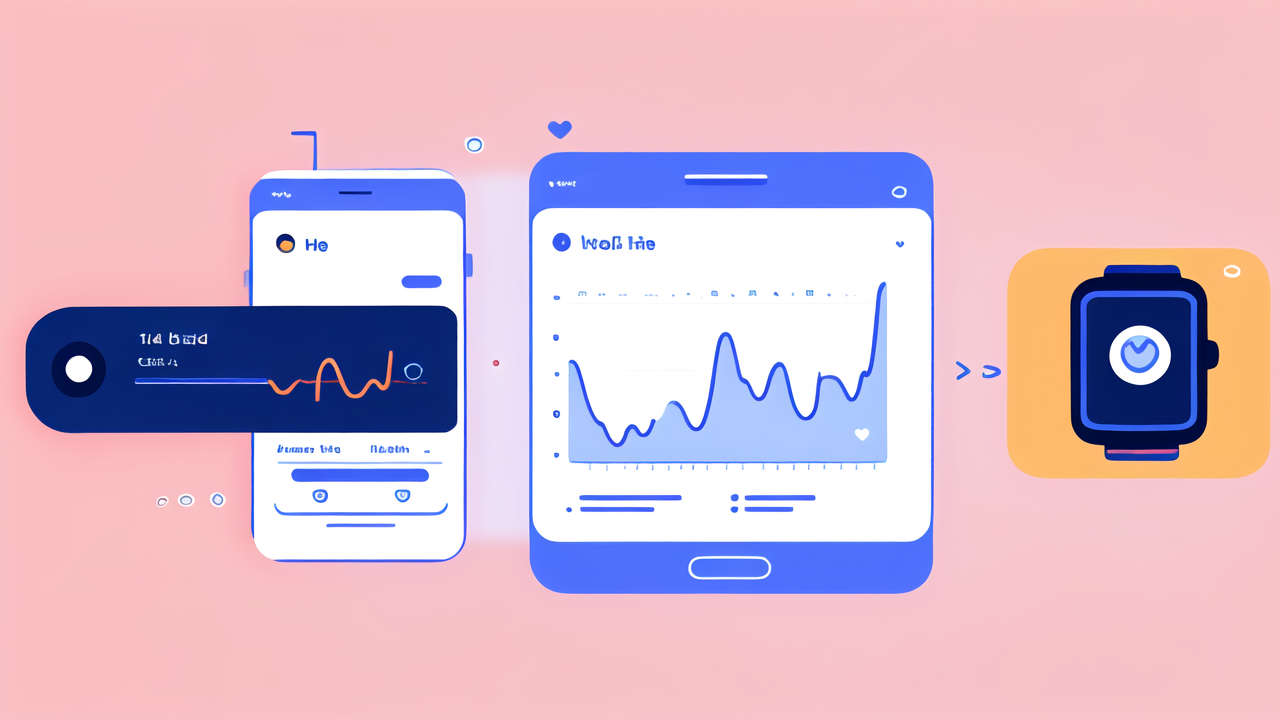The Rise of Smart Watches in Healthcare
Understanding the Evolution of Wearable Technology
Wearable tech has come a long way. It started with simple step counters. Now, we have smart watches that do much more. These devices can track our heart rate, sleep, and even stress levels. The evolution has been rapid and impressive. Early fitness trackers were basic. They only counted steps and estimated calories burned. Today's smart watches are mini-computers on our wrists. They offer a wide range of health monitoring features. This growth shows how important health tracking has become in our daily lives.

How Smart Watches are Changing Health Monitoring
Smart watches have revolutionized personal health tracking. They provide real-time data on various health metrics. Users can monitor their heart rate, blood oxygen levels, and sleep patterns. Some watches can even detect falls or irregular heart rhythms. This instant access to health data empowers users to make informed decisions. They can spot trends in their health and lifestyle. Smart watches also encourage users to be more active. They send reminders to move and celebrate fitness achievements. This constant feedback loop promotes healthier habits.
The Impact of Connectivity and AI in Healthcare Devices
Connectivity and AI have transformed smart watches into powerful health tools. These devices can now sync with other health systems and apps. This allows for a more comprehensive view of one's health. AI algorithms analyze the collected data to provide personalized insights. They can predict potential health issues before they become serious. Some watches can even suggest when to see a doctor. The combination of connectivity and AI makes smart watches valuable partners in preventive healthcare.
Key Features to Look for in a Health Monitoring Smart Watch
Integrated Health Metrics and Tracking
When choosing a health monitoring smart watch, look for these key features:

- Heart rate monitoring
- Sleep tracking
- Step counting and activity tracking
- Blood oxygen level measurement
- Stress level monitoring
- ECG capabilities (in some advanced models)
- Menstrual cycle tracking for women
The best smart watches offer continuous monitoring of these metrics. They provide both real-time data and long-term trends. This comprehensive tracking helps users understand their overall health better. It's important to choose a watch that tracks the metrics most relevant to your health goals.
Advanced Analytics and Data-Driven Health Insights
Smart watches now offer more than just raw data. They provide advanced analytics and insights. Look for watches that:
- Analyze sleep patterns and offer tips for better sleep
- Provide personalized workout recommendations
- Offer stress management techniques based on your stress levels
- Give recovery time suggestions after intense workouts
- Alert you to potential health issues based on your data
These insights turn data into actionable information. They help users make informed decisions about their health and lifestyle. The best smart watches use AI to personalize these insights over time. This makes the recommendations more accurate and useful.
Ensuring Compatibility with Health Systems and Apps
A good health monitoring smart watch should work well with other health tools. Consider these factors:
- Compatibility with popular health and fitness apps
- Ability to sync data with your healthcare provider's systems
- Integration with smart home devices for a holistic health approach
- Support for third-party apps to expand functionality
- Easy data export options for personal record-keeping
Compatibility ensures that your smart watch fits into your broader health ecosystem. It allows for a more complete picture of your health. Look for watches that offer open APIs or work with major health platforms. This will give you more flexibility in how you use and share your health data.
Smart Watch Health Monitoring in the United States: Regulations and Best Practices
Navigating FDA Regulations and Health Monitoring Devices
In the US, the FDA oversees health monitoring devices. This includes many smart watches. The FDA classifies these devices based on their features and claims. Some key points to understand:

- Basic fitness tracking features usually don't need FDA approval
- Watches that claim to diagnose or treat conditions may need FDA clearance
- The FDA has created a pre-certification program for digital health products
- Some watches are classified as "general wellness devices" with less strict rules
As a consumer, check if the watch's health features are FDA-cleared if they claim medical benefits. Remember, FDA clearance doesn't guarantee effectiveness. It means the device is safe for its intended use. Always consult with healthcare professionals for medical advice.
Ethical Considerations in Wearable Health Technology
As smart watches collect more health data, ethical concerns arise. Key issues include:
- Data privacy and security
- Potential for discrimination based on health data
- Accuracy and reliability of health measurements
- Over-reliance on technology for health decisions
- Digital divide in access to health monitoring technology
Users should be aware of how their data is collected, stored, and used. Read privacy policies carefully. Consider the implications of sharing health data with third parties. It's also important to maintain a balance between tech-based monitoring and professional medical care.
Best Practices for Consumers to Maximize Health Benefits
To get the most out of your health monitoring smart watch:
- Set realistic health goals and use the watch to track progress
- Regularly review your data to understand your health trends
- Use the insights provided, but don't rely solely on them for health decisions
- Keep your watch's software updated for the latest features and security
- Learn how to interpret the data your watch provides
- Share relevant data with your healthcare provider during check-ups
- Use the watch as a tool for motivation, not as a source of stress
- Customize alerts and notifications to avoid information overload
- Combine watch data with other health practices for a holistic approach
- Remember that the watch is a tool, not a replacement for medical care
By following these practices, you can use your smart watch as an effective health partner. It can help you make informed decisions and maintain a healthier lifestyle. Always balance the use of technology with professional medical advice for the best results.




Leave a comment
This site is protected by hCaptcha and the hCaptcha Privacy Policy and Terms of Service apply.